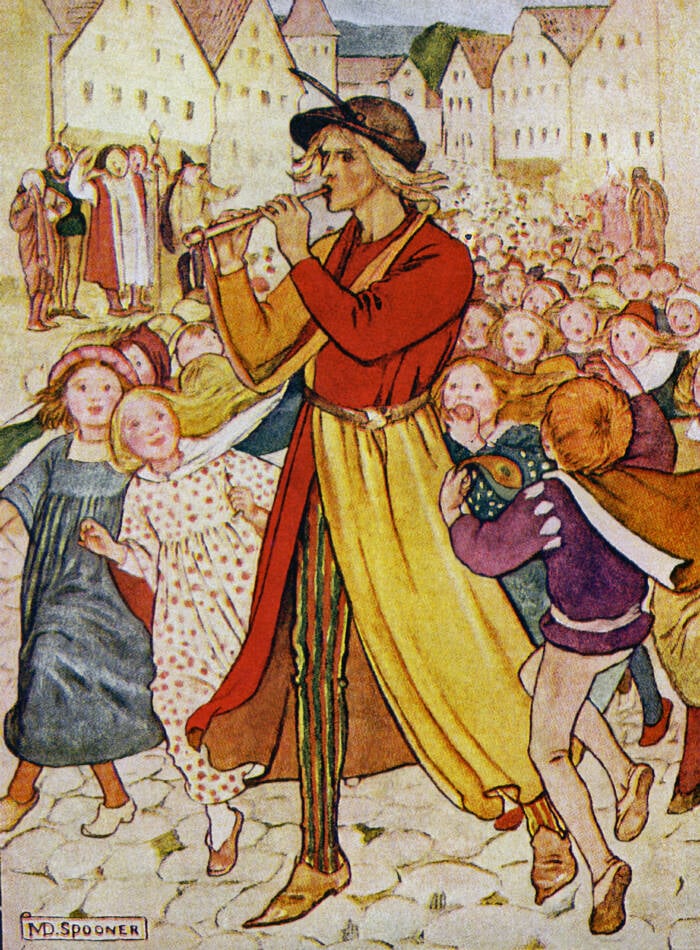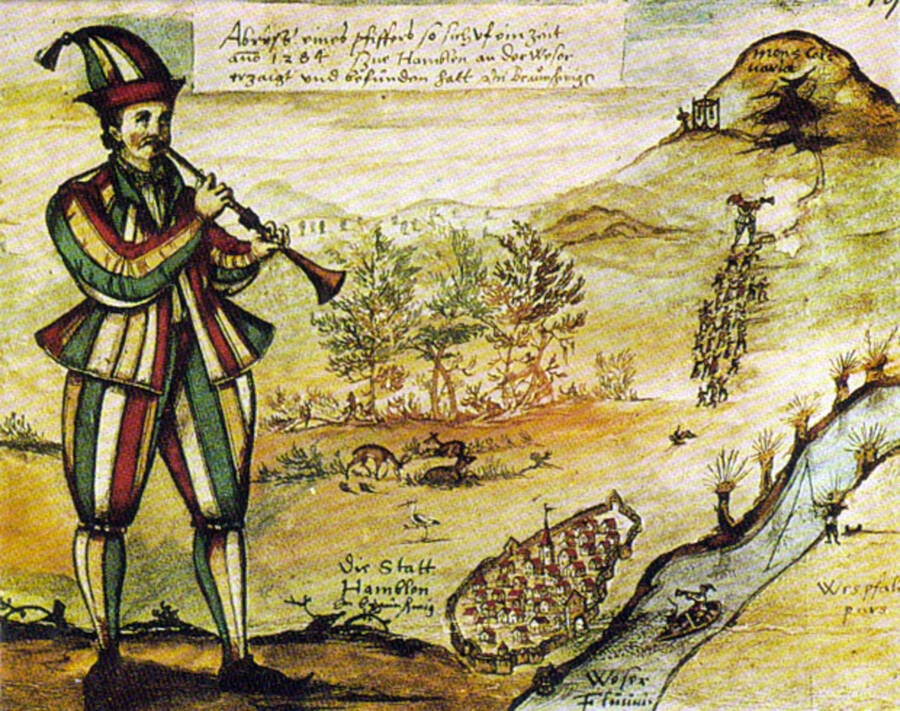In the story of the Pied Piper, the people of Hamelin refuse to pay a ratcatcher — who uses his magic flute to lure the children away from town, never to return.

Ivy Close Images / Alamy Stock PhotoPied Piper’s meaning has to do with a legend that originated in 13th-century Germany.
If you’ve ever been in a major city, then you know that rats can be a problem. They were a problem hundreds of years ago in the German town of Hamelin too, and that’s where the mysterious legend of the Pied Piper first originated. But what does Pied Piper really mean?
Read on to learn how Pied Piper is used today, where this curious phrase came from, and what might have actually happened in Hamelin, Germany in the 13th century to inspire the story.
The Meaning Of Pied Piper
To start, what does the phrase Pied Piper mean?
Today, it’s a short phrase meant to describe a charming leader who shepherds their trusting followers into danger. A Pied Piper is someone who enchants and bewitches — then betrays.
For some people, that danger has an edge of adventure. In Rainbow Valley by L.M. Montgomery (who wrote the Anne of Green Gables series) the Pied Piper is mentioned by characters who long to be drawn out into the world.
The “adventure” offered by the Pied Piper, however, is World War I.
“Let the Piper come and welcome,” the character Jem exclaims in the last line of Montgomery’s book. “I’ll follow him gladly round and round the world.”
Where did this idea come from? The meaning of Pied Piper can be traced back hundreds of years to Hamelin. There, in the 13th century, a rat catcher known as the Pied Piper allegedly led all the town’s children away in an act of revenge. They were never seen again.
So, what exactly happened in Hamelin?
The Tragedy Of Hamelin, Germany
In Hamelin, there is an old stone house with a curious inscription.
According to the Freeport Journal-Standard, it reads: “A.D. 1284 — on the 26th of June — the day of St. John and St. Paul — 130 children — born in Hamelin — were led out of the town by a piper wearing multicolored clothes. After passing Calvary near the Koppenberg they disappeared forever.”
This seed of a story has been repeated throughout the generations, by Goethe, the Brothers Grimm, and by the poet Robert Browning. But the story of the Pied Piper began in here.
As local legend goes, the town was besieged by rats. The powers-that-be hired the Pied Piper, an eccentric figure in multicolored clothing, to rid the town of its scourge of rodents. Using his magic flute, the Pied Piper lured the rats out of Hamelin to their deaths.

The Picture Art Collection / Alamy Stock PhotoThis image of the Pied Piper appeared on the stained glass window of a church in Hamelin.
The job done, he asked the townspeople to pay him — but they refused. So, the Pied Piper decided to use his magic flute again. This time, he targeted the town’s children. Luring them with his music, he led them out of Hamelin.
The children were never seen again.
Though the story seems fantastical, there appears to be historical proof that something happened to Hamelin’s children in 1284. According to the BBC, a morose entry from the town’s records in 1384 reads: “It is 100 years since our children left.”
A stained-glass window in a local church, since destroyed, also depicted the Pied Piper leading the town’s children away. Historical accounts from the 15th century also allude to the story of a Pied Piper leading children out of Hamelin to a place called Calvary or Koppen.
The meaning of Pied Piper, then, may be deeper than just a fairytale.
Theories About The Pied Piper Legend
If the meaning of Pied Piper is based in truth, then what exactly happened in Hamelin in 1284? Did a rat catcher with a magical flute really pass through and steal the town’s children?
Perhaps events didn’t unfold exactly like that, but historians have offered possible explanations for what the legend of the Pied Piper means.

Foto Fitti/Wikimedia CommonsThe picturesque town of Hamelin, Germany, has leaned into its association with the Pied Piper in recent years.
One possibility is that the town’s young people drifted east as part of a larger migration trend. They may have even been led by a recruiter who led such migrations, one who bore a strong resemblance to the colorful ratcatcher of legend.
“[Recruiters] were responsible for organizing migrations to the east and were said to have worn colorful garments and played an instrument to attract the attention of possible settlers,” Wibke Reimer, a project coordinator at the Hamelin Museum, explained to the BBC.
There’s some evidence for this theory, as last names commonly found in Hamelin began to pop up near Berlin at the end of the 13th century, suggesting that people from the town did, in fact, migrate east.
Other theories suggest that Hamelin’s children may have left town as part of the Children’s Crusade, though this took place decades earlier, in 1212, or perhaps that they were wiped out by the Black Death, though this happened later, between 1347 and 1351.
There’s even a theory that Hamelin’s children got caught up in the dancing plague that swept through Europe, most famously in 16th-century Strasbourg. As the BBC reports, a similar occurrence happened near Hamelin in the 13th century, during which local youths started dancing uncontrollably.
Then again, something else could have happened to the children of Hamelin. Maybe they were massacred. Maybe they were simply led out of town by a mysterious figure in multicolored clothing.
The mystery remains to this day, and, as such, the true meaning of Pied Piper is somewhat murky. Though used currently to describe someone who leads people astray, the origins of the Pied Piper legend are shrouded in mystery. What happened in Hamelin in 1284? How did the town’s children disappear?
The answer is lost to time. But the moral of the story seems to be that if you hire a rat catcher and he does a good job — be sure to pay him.
After reading about the true meaning of Pied Piper, go inside the chilling tale of Charles Schmid, the 1960s serial killer dubbed the “Pied Piper of Tucson” for how he lured his victims. Or go inside the possible historical meaning of the Humpty Dumpty and other nursery rhymes with dark origins.





